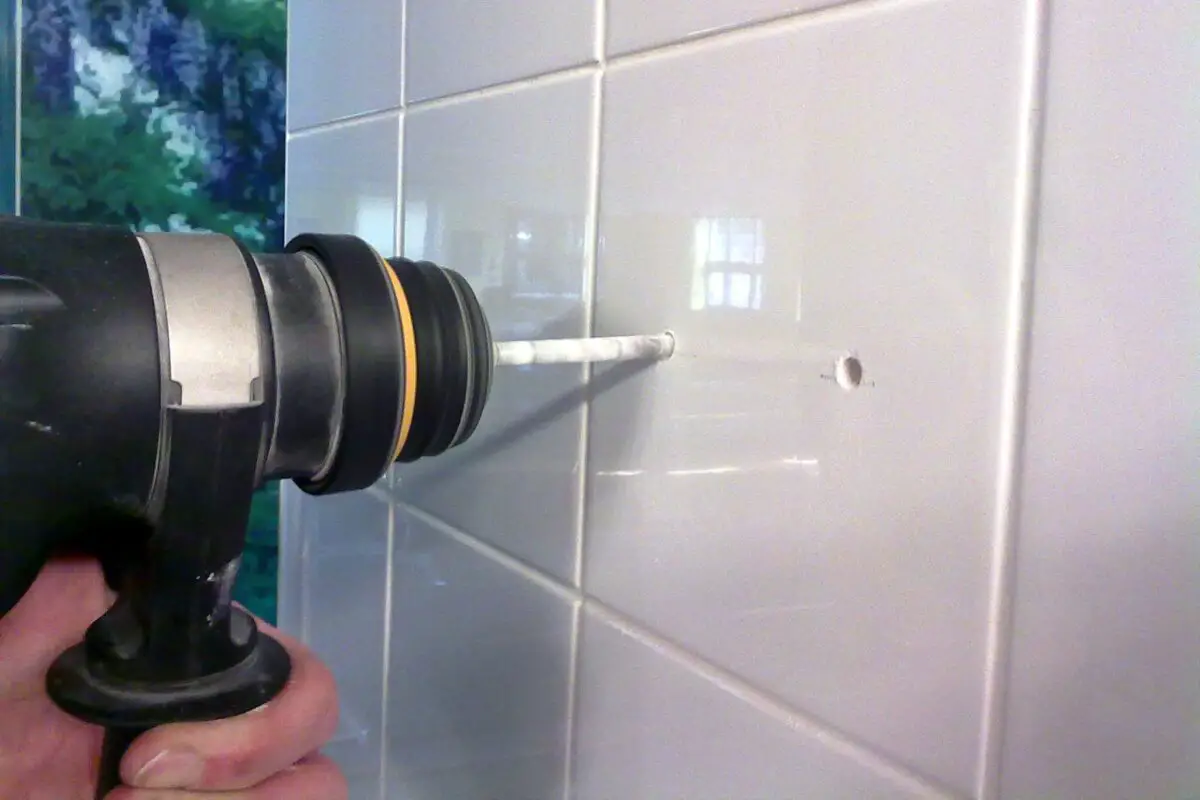When I first started doing DIY home improvements, I struggled with drilling into a tile. Trying to drill into a tile with a standard bit leads to disappointment, resulting in cracked tiles, damaged walls, and worn drill bits.
After years of research and trials, I’ve discovered the right bits for drilling into various types of tiles. If you’re a frustrated homeowner who wants to finish tile projects, this article will guide you in choosing what drill bits to use on tiles.
Contents
What Drill Bit to Use on Tiles
For softer tiles, like ceramic, carbide-tipped masonry bits are appropriate. Diamond-tipped bits are for tougher ones, such as porcelain and some natural stones. Spear-shaped glass and tile bits are best for ceramic and porcelain tiles and have a special tip that lessens the chance of tile damage.
Natural stone, porcelain, and ceramic are common categories of tiles. Each has a distinct degree of hardness for different drilling techniques. Preparing the right bits is crucial to ensure an efficient drilling process.
Types of Bits for Drilling Tiles
Tiling can transform the look and feel of any space, whether it is a kitchen backsplash, bathroom wall, or flooring throughout a home. While the tile makes a major impact, choosing the right bit for the job is just as important.
Carbide-Tipped Masonry Bits
The carbide grinding tips allow them to cut through the hard surface glaze without cracking or chipping the tile. They are commonly used for drilling clearance holes in tile walls and floors before mounting.
The durability of carbide-tipped bits makes them ideal for frequent drilling. They come in sizes like 3/16-inch and 1/4-inch to match wall anchors. The drill bit does not easily fall out.
Diamond-Tipped Drill Bits
Diamond-tipped bits have industrial diamond particles bonded to the tip, which makes them extremely hard, durable, abrasion-resistant and keep drill bits from rusting. This allows them to drill through rigid materials without excessive wear.
They provide smooth, clean, and precise holes. Moreover, they are commonly used to make holes for faucets, towel bars, and other fixtures in tile surfaces. This is why I also opt for these bits when I use a Dremel to cut rocks without a saw.
Spear-Shaped Glass and Tile Bits
Spear-shaped glass and tile bits have an elongated, pointed cutting end mounted to a shaft. Their unique shape allows access to tight corners and small spaces, so they are commonly used when making tile cutouts for outlets, faucets, and fixtures.
The spear tip’s angles and sharpness efficiently chip away tile glazes and ceramics. Spear bits come with tungsten carbide or industrial diamond coatings for durability when shaping and contouring tiles.

Different Types of Bits for Tackling Common Drilling Challenges
Drilling tiles can sometimes pose challenges, yet with the right type of bit, you can overcome them. Here are three common obstacles and their solutions:
- Spear-shaped bit: Stop immediately if the tile starts to crack while drilling. Apply masking tape over the drilling spot to minimize tile movement and stop breaking. Switch to a tile-specific bit, such as a spear-shaped glass and tile bit, for greater precision and control.
- Diamond-tipped bit: Place a small piece of duct tape over the drilling spot to prevent the drill bit from slipping on the tile surface. The adhesive surface provides extra grip and helps keep the bit in place. A diamond-tipped bit is the type of drill bit that works best for avoiding tile slippage.
Take the time to evaluate your material, tools, and needs. Use caution and protective equipment when operating power tools to drill tile. A little planning goes a long way to prevent cracked tiles and ensure your installation looks professional.
Related Questions
What Type of Drill Bit Is Best for Tiles?
Diamond-tipped drill bits are the best type for drilling into tile materials. The industrial diamond particles bonded to the tip make them extremely hard and durable enough. They stay sharp for many bores, provide smooth, clean cuts without cracking, and enable precise holes for fixtures.
How Do You Drill Into Tile Without Cracking It?
Use a diamond-tipped masonry bit and bore at a slow speed to avoid overheating it. Use a drill guide for stability and make a dimple with a center punch before drilling to prevent wandering. Minimize cracking by starting with a smaller pilot hole before using larger bits.
Can I Use a Metal Drill for Tiles?
While metal drill bits can be used to drill into tiles, they tend to perform poorly and have significant downsides. The rigidity and abrasiveness of tile materials cause excessive wear on their cutting edges. This generates high friction, leading to the tile cracking around the hole as it is drilled.
Conclusion
Tile installation results depend on using the right tools for the work, especially the type of drill bit. Masonry, spear-shaped glass, and diamond tile bits provide clean, precise holes without cracking tiles. Armed with the right bits and knowledge, you can drill tiles successfully.

